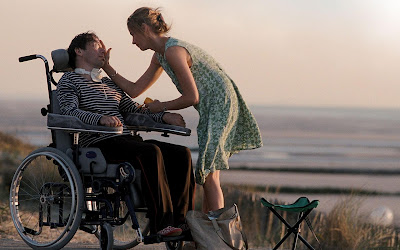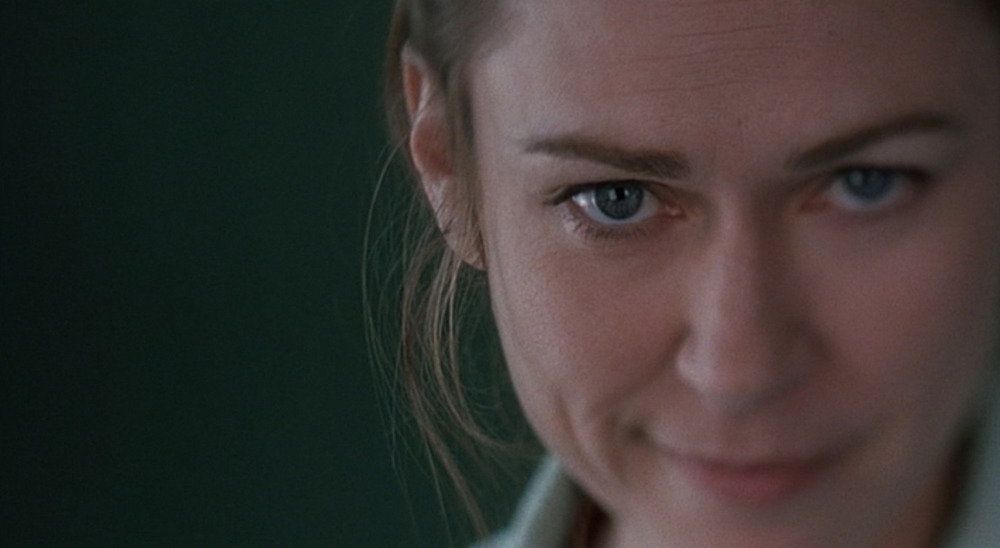OVERALL LOOK
Janusz
Kaminski, the cinematographer of The Diving Bell and the Butterfly (2007), was able to give the best perspective of a
character’s point of view. Kaminski had the audience believe and understand Jean-Dominique
Bauby’s (Mathieu Amalric) real-life struggle through the use of his left eye,
due to a stroke. By doing so, he was able to show other character’s like the
doctors, nurses, speech and language therapist, and loved ones the focus for the
first forty minutes of the film. Once the audience finally see’s Bauby himself,
they get see flashbacks of what kind of a life he had before his stroke which
also has great cinematography as well. Since his work on this film was so different and respected, Kaminski cinematography won him several accolade
which included;
The Boston Society of Film Critics, Los Angeles Film Critics Association, Satellite
Awards,
33rd César Awards, and best of all 80th Academy Awards.


IMAGES
One of the scenes that stood out to me in the film was how Bauby’s character was expressing to the audience that though his body cannot move at all, his mind is free think of whatever he pleases. Like his thoughts of a butterfly; viewing it flying through flowers; his thoughts on a beach, a mountain, the Amazon, to being with a woman in one of those elements. One last thing that is worth mentioning is how the audience will randomly see Bauby’s character in a diving bell suit. Now this was more of symbolism, that he is telling and explaining to the audience that this is how he is feeling. He cannot move, feels as though he is floating, but is trapped with where he is at.

SHOT LENGTHS
In the
beginning there were several shots that were well displayed in length, and
there did seem to be a sort of pattern that was going on. For example, the film
starts off with Bauby in a hospital bed meeting the doctors and trying to
figure out what is happening, and they give him an explanation of his diagnosis
and where to go from there. Next he meets with the specialists that will be
working with him, and they give their insights and opinions on how he would
start communicating, and how he would start slowly to rehabilitate his mouth. Next,
the audience is introduced to (what Bauby explains) the mother of his three
children, and she has a conversation with him, which was tricky since it she
was only able to ask him yes or no questions. Finally, the audience is shown a
sort of montage of the daily regimen that Bauby has to endure. This new routine
consists from getting washed off, getting dressed, doing his physical therapy, to
practicing his new form of communication.

SHOT TYPES
From the very
start of the film we get a lot of extreme close-ups of different characters.
These shots of the characters show what an importance they have on Bauby. There
are a few long shots that the audience get to see of Bauby. The significance
about this is that they seem him in his wheel-chair, and how he was before.
This is telling the huge difference and comparison, from being well normal and
even somewhat successful in the business that he was in, to evidently being handicapped
from his stroke.


CAMERA ANGLES
Carrying on from shot-type, there were quite a
few camera angles that needs mentioning. It was important for Kaminski to show his
use of eye-level shot was to have the audience understand that Bauby’s
character was equal to everyone else, despite being handicapped. This would
help justify the Bauby’s character mind since he has strong thoughts, and
imaginations. In other, if Kaminski had Bauby’s character looking up at the
other characters the audience would feel weak, or if he was looking down, the
audience would have power, which would not make sense at all. Now one of the
few times that we get a low shot angle is when Bauby is with his family on
Father’s Day, the audience gets the shot of his helping him wipe his father’s
chin. Though this may have been a weak moment, it gave Bauby’s son a touching
but powerful moment.


COMPOSITION
A scene that
show to have had heavy composition is when Bauby left his girlfriend (model) at
the hotel because of religious reasons. The audience will notice that he alienated
himself, and sees that in the town the people who are out are with someone.
This is telling Bauby’s character that they are all there for a reason, and it
is a reason that lacked, faith. Once he is alone in what now looks like a
deserted town, he finds himself in front of a store that has a Virgin Mary (the
Madonna) at the window. Though the scene cuts off right away, Bauby’s observes
her while the audience read his reflection in the window. The audience is left
to wonder what Bauby is wondering about, or what he is disappointed in.

CAMERA MOVEMENT
The scene or camera movement that I felt
added some visual excitement was the where Bauby’s was driving his new car to
his country side home. Of course this scene was to have Bauby either remember
what happened before his stroke, or for him to have him flashback to a happy
moment that he had of physical freedom. Since Bauby left his car top down, it
allowed for Kaminski to move the camera as he please. The interesting part
about this that it looks as though the audience is getting a view from inside
the car, as in the camera is sitting on the passenger seat. The part about this
scene is that the audience views Paris and Bauby enjoying himself while they
are taking in the time to relax themselves. For it having a lot of movement, it
was handle with a lot of care and smoothness.

CINEMATOGRAPHY STYLE
Kaminski style
of cinematography was clearly intentional, and that is a great thing to say and
even have admit. The reason clearly speaks for itself, and that it for the
audience to understand and follow what is going on with the story through the
camera. The main intentional style that was dominate and important was filming the
point of view of Bauby’s character, and by doing so as if it were from his left
eye. Which why the characters are patterned to be on a certain part of the
frame a majority of the time. This alone gives the idea of the struggle that
Bauby had to endure.


No comments:
Post a Comment